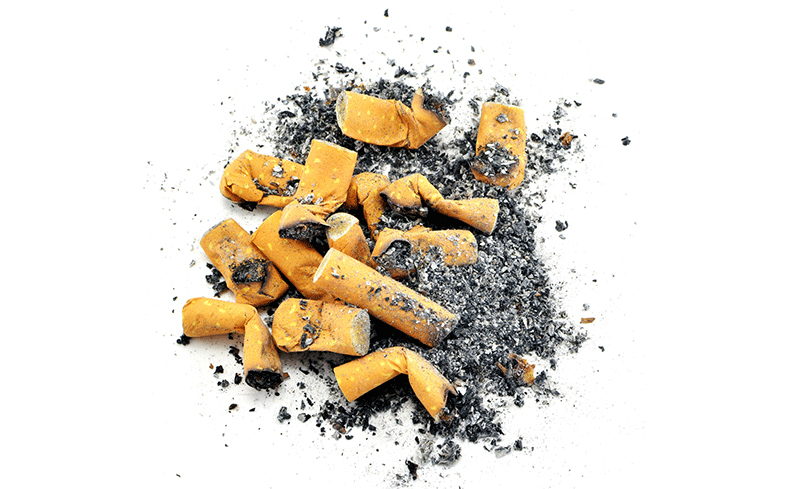How Smoking and Nicotine Damage Your Body

You probably know about the relationship between smoking and lung cancer, but did you know smoking is also linked to heart disease, stroke and other chronic diseases? Smoking can increase your risk for cancer of the bladder, throat, mouth, kidneys, cervix and pancreas. Thinking about quitting? Look at the facts!
Why should you quit?
- Smoking is the most preventable cause of death and disability in the United States.
- Almost one third of deaths from coronary heart disease are due to smoking and secondhand smoke.
- Smoking is linked to about 90% of lung cancer cases in the United States.
- Smoking rates overall are down, but too many adults still smoke, vape and use other forms of tobacco, especially between the ages of 21 and 34.
- Almost half of U.S. children ages 3-11 are exposed to secondhand smoke.
- On average, smokers die more than 10 years earlier than nonsmokers.
- You can be one of the millions of people who successfully quit every year.
What makes cigarettes so toxic and dangerous?
There are more than 7,000 chemical components found in cigarette smoke and hundreds of them are harmful to human health, according to the Centers for Disease Control and Prevention.
Here are a few examples:
- 1,3-Butadiene is a chemical used to manufacture rubber. It is considered to be a cancer-causing chemical that can cause certain blood cancers.
- Arsenic is used to preserve wood. Some arsenic compounds have been linked to cancer of the lung, skin, liver and bladder.
- Benzene is used to manufacture other chemicals. It can cause cancer, particularly leukemia, in humans.
- Cadmium is a metal used to make batteries. Cadmium and cadmium compounds can cause lung cancer and have been associated with kidney and prostate cancer.
- Chromium VI is used to make alloy metals, paint and dyes. Chromium VI compounds cause lung cancer and have been associated with cancer of the nose and nasal sinuses.
- Formaldehyde is used to make other chemicals and resins. It is also used as a preservative. Formaldehyde causes leukemia and cancer in respiratory tissues.
- Polonium-210 is a radioactive element that has been shown to cause cancer in animals.
- Tar is not one single chemical, instead it describes several chemicals that are in tobacco smoke. It leaves a sticky, brown residue on your lungs, teeth and fingernails.
Carbon monoxide & nicotine: A dangerous duo
Carbon monoxide is a harmful gas you inhale when you smoke. Once in your lungs, it’s transferred to your bloodstream. Carbon monoxide decreases the amount of oxygen that is carried in the red blood cells. It also increases the amount of cholesterol that is deposited into the inner lining of the arteries which, over time, can cause the arteries to harden. This leads to heart disease, artery disease and possibly heart attack.
Nicotine is a dangerous and highly addictive chemical. It can cause an increase in blood pressure, heart rate, flow of blood to the heart and a narrowing of the arteries (vessels that carry blood). Nicotine may also contribute to the hardening of the arterial walls, which in turn, may lead to a heart attack. This chemical can stay in your body for six to eight hours depending on how often you smoke. Also, as with most addictive substances, there are some side effects of withdrawal. And some e-cigarettes and newer tobacco products deliver even more nicotine than traditional cigarettes.
Secondhand smoke
Smokers aren’t the only ones affected by tobacco smoke. Secondhand smoke and vapor is a serious health hazard for nonsmokers, especially children. Nonsmokers who have high blood pressure or high blood cholesterol have an even greater risk of developing heart diseases when they’re exposed to secondhand smoke. Secondhand tobacco smoke contributes to thousands of premature heart disease and lung cancer deaths. Studies show that the risk of developing heart disease is about 25-30 percent higher among people exposed to environmental tobacco smoke at home or work. Secondhand smoke promotes illness, too. Children of smokers have many more respiratory infections than do children of nonsmokers.
The bottom line
Cigarettes, e-cigarettes and other tobacco products contain many dangerous toxins. The best thing you can do for your health is to quit tobacco entirely. Don’t spend the rest of your life chained to a nicotine addiction. Thousands of people kick the habit every year, and you can be one of them. It may not be easy, but you can do it!






